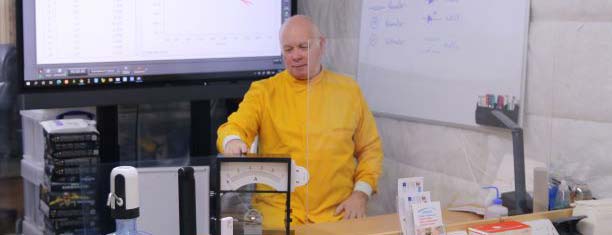Red and Green Make Yellow. In years 10-11 this is the first time many students have mixed light and become aware of how light is different to paint. And that the sun produces white light broken into a spectrum rather than a yellow sun they got taught in primary school.
Saturday 30 September 2023
Friday 29 September 2023
Balancing ionic Equations using Ionic cards
Balancing ionic Equations using Ionic cards. Using the Visualiser on the desk to take images and place them into the electronic book to record the results.
Thursday 28 September 2023
Simple Harmonic Motion
A spring and a mass using @pascoscientific ultrasonic motion sensor is an excellent introduction to Simple Harmonic Motion. Within seconds, we had Position, Velocity and Acceleration graphs to compare the motion of the spring, and then, including a force meter, we could capture all the info.
Wednesday 27 September 2023
Matrix Manipulation made easy
Tuesday 26 September 2023
Lasers online
Teaching all about reflection and refraction online. In the lab, we can work in a darkened room with a light source, Online, we have to use the laser in a Wave Tank using Fluorescein dye to help the green laser show up so the students can see the path of the beam of light.
Monday 25 September 2023
Competition in plants Experiment
Comparing the growth rate of cress seeds sown 4, 8, 16, 32, 64, 128, 256 in a petri dish. Each day, we looked at and compared the heights of the tallest plant as they germinated and grew.. Conclusion: the best cress for eating was in the 256 as they were the tallest. Healthy eating, too.
Other things being equal, does the presence of other plants from the same species affect the growth of individual plants in a predictable fashion?
Starting Procedure:
- Obtain a set of six petri dishes Put an inch or two of tape on each pot as a label and label each petri dish with the number and type of seeds to be planted in each plus something to identify them as yours. Use pencil as the pots will be sprayed regularly with water and left in sunlight. Ink can fade and wash away but the pencil marks should persist.
- Fill each petri dish with cotton wool.
- Plant either 4, 8, 16, 32, 64, 128, 256 seeds in each petri dish Do your best to space them evenly over the dish
- The plants will be watered and tended for the next several days.
- Once the plants have germinated measure their growth at the same time each day.
Try another experiment using the same number of seeds but this time half are mustard seeds and the other half are cress. Make sure to mix them.
How do the results compare?
Sunday 24 September 2023
Normalisation
Normalisation seems like a black art to many students, but getting the data to 3NF becomes quite easy using a stock, order and customer table. Real-world examples which many on to use in jobs in the future.
Subscribe to:
Posts (Atom)
A level Math
Students working out just what formulae are and are not in the exam sheet. Then, the panic can begin to memorise the formulae that are not...

-
Negative feedback is a difficult concept to try and get over so I tried using a balance board and the @pascoscientific smart cart strapped...
-
Getting a classic set of results for the titration of NaOH and HCl is not that difficult but it is nice when we can get students to this ...
-
Mechanics: the grand meeting of Maths & Physics! Using strobe light & a ball drop for gravity-acceleration calculations and SUVAT fo...















